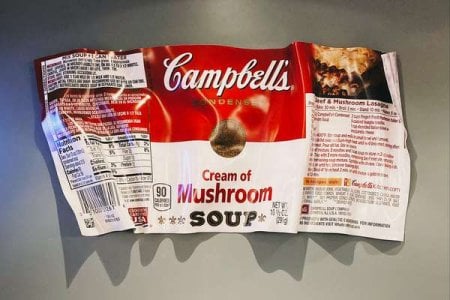Stop throwing away $2500 a year! The truth about food labels every Australian needs to know
- Replies 0
Did you know the average Aussie household is tossing out a staggering $2,500 worth of food every year?
That’s not just a few sad-looking veggies at the back of the fridge—it’s a mountain of money (and meals) going straight into the bin! And according to experts, a big part of the problem is right there on the packaging: those confusing 'best before' and 'use by' dates.
If you’ve ever stood in your kitchen, squinting at a yoghurt tub and wondering if it’s still safe to eat, you’re not alone.
Researchers from RMIT University and End Food Waste Australia have found that many of us are so overwhelmed by the jumble of information on food labels that we end up playing it safe and throwing out perfectly good food.
As Professor Simon Lockrey puts it, 'It’s like a massive car park full of a whole lot of information jostling for the best park.' No wonder we’re confused!
The Cost of Confusion
Let’s put this into perspective: Australia wastes a whopping 7.6 million tonnes of food every year. That’s enough to fill the MCG nine times over!
For the average household, that’s $2,500 down the drain annually—money that could be spent on a holiday, a new appliance, or a few extra treats for the grandkids.

Associate Professor Lukas Parker from RMIT says, 'It’s really just throwing away money.' And he’s right. Most of us have been taught to trust the dates on packaging, but sometimes our senses—smell, taste, and touch—are just as reliable, if not more so.
Decoding the Dates: What Do They Really Mean?
Here’s the golden rule:
In earlier news: It's 'going to stink’: Residents outraged over major bin changes
So, before you throw out that packet of biscuits or that block of cheese, give it a sniff, a look, or even a little taste. If it seems fine, it probably is!
A Call for Change: Making Labels Work for Us
The experts aren’t just pointing out the problem—they’re working on solutions. Professor Lockrey and his team are pushing for a new, standardised, colour-coded labelling system.
Imagine if every food item had a clear, visual guide—like a traffic light system—telling you when it’s safe to eat, when it’s best, and when it’s time to say goodbye. It could make shopping, storing, and eating food so much simpler.
'People need a new tool belt to put all the tools in to deliver really good food outcomes,' Lockrey says. In other words, we need labels that help us, not hinder us.
Read next: This app could help your grocery budget—if you know how to use it right

We’d love to hear from you, members! Have you ever thrown out food because of a confusing label? Do you have any tips for making your groceries last longer? Or maybe you’ve got a family recipe that’s perfect for using up leftovers? Share your stories and ideas in the comments below!
That’s not just a few sad-looking veggies at the back of the fridge—it’s a mountain of money (and meals) going straight into the bin! And according to experts, a big part of the problem is right there on the packaging: those confusing 'best before' and 'use by' dates.
If you’ve ever stood in your kitchen, squinting at a yoghurt tub and wondering if it’s still safe to eat, you’re not alone.
Researchers from RMIT University and End Food Waste Australia have found that many of us are so overwhelmed by the jumble of information on food labels that we end up playing it safe and throwing out perfectly good food.
As Professor Simon Lockrey puts it, 'It’s like a massive car park full of a whole lot of information jostling for the best park.' No wonder we’re confused!
The Cost of Confusion
Let’s put this into perspective: Australia wastes a whopping 7.6 million tonnes of food every year. That’s enough to fill the MCG nine times over!
For the average household, that’s $2,500 down the drain annually—money that could be spent on a holiday, a new appliance, or a few extra treats for the grandkids.

Confusing best-before and use-by date labels are causing Australians to throw out food that’s often still safe to eat, costing households around $2500 a year in unnecessary waste. Image source: Jon Tyson / Unsplash.
Associate Professor Lukas Parker from RMIT says, 'It’s really just throwing away money.' And he’s right. Most of us have been taught to trust the dates on packaging, but sometimes our senses—smell, taste, and touch—are just as reliable, if not more so.
Decoding the Dates: What Do They Really Mean?
Here’s the golden rule:
- Use by: This is a safety label. If the date has passed, it’s best to toss it—especially for perishable items like meat, dairy, and ready-to-eat salads.
- Best before: This is about quality, not safety. Food might not be at its absolute best after this date, but it’s often still perfectly fine to eat. Think of it as a gentle nudge rather than a hard stop.
In earlier news: It's 'going to stink’: Residents outraged over major bin changes
So, before you throw out that packet of biscuits or that block of cheese, give it a sniff, a look, or even a little taste. If it seems fine, it probably is!
A Call for Change: Making Labels Work for Us
The experts aren’t just pointing out the problem—they’re working on solutions. Professor Lockrey and his team are pushing for a new, standardised, colour-coded labelling system.
Imagine if every food item had a clear, visual guide—like a traffic light system—telling you when it’s safe to eat, when it’s best, and when it’s time to say goodbye. It could make shopping, storing, and eating food so much simpler.
'People need a new tool belt to put all the tools in to deliver really good food outcomes,' Lockrey says. In other words, we need labels that help us, not hinder us.
Read next: This app could help your grocery budget—if you know how to use it right
Key Takeaways
- Confusing best-before and use-by date labels are causing Australians to throw out food that’s often still safe to eat, costing households around $2500 a year in unnecessary waste.
- Researchers from RMIT University and End Food Waste Australia are calling for a clearer, standardised, colour-coded food labelling system to help consumers make better decisions and reduce waste.
- Simple checks like smelling, tasting, or touching food could help Aussies assess freshness instead of relying solely on expiry dates.
- The general rule is that 'use by' dates are about safety and shouldn’t be exceeded, while 'best before' dates are just a guide to quality.
We’d love to hear from you, members! Have you ever thrown out food because of a confusing label? Do you have any tips for making your groceries last longer? Or maybe you’ve got a family recipe that’s perfect for using up leftovers? Share your stories and ideas in the comments below!







